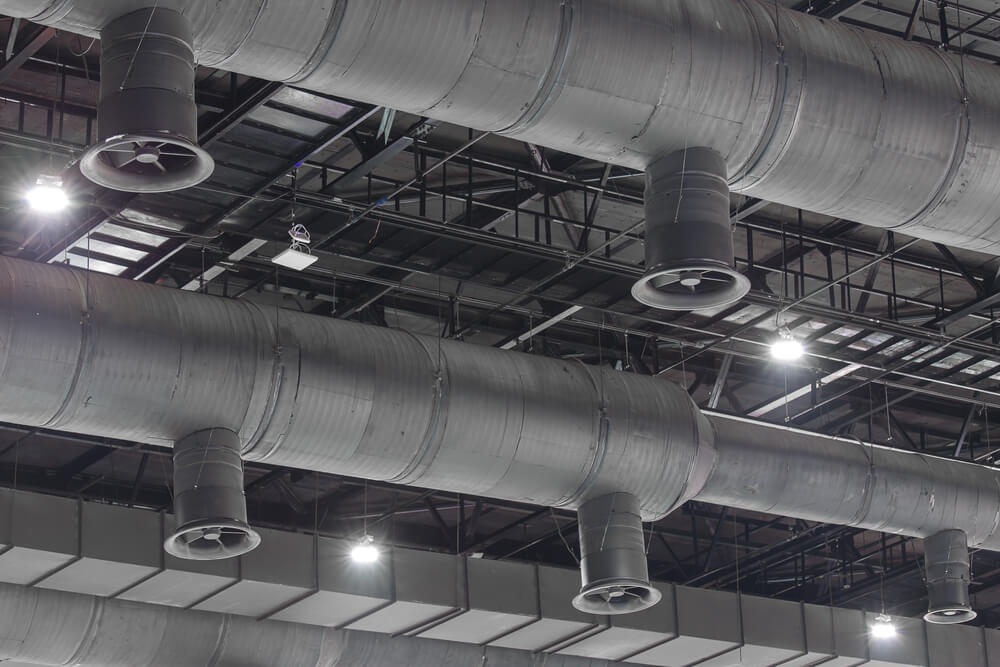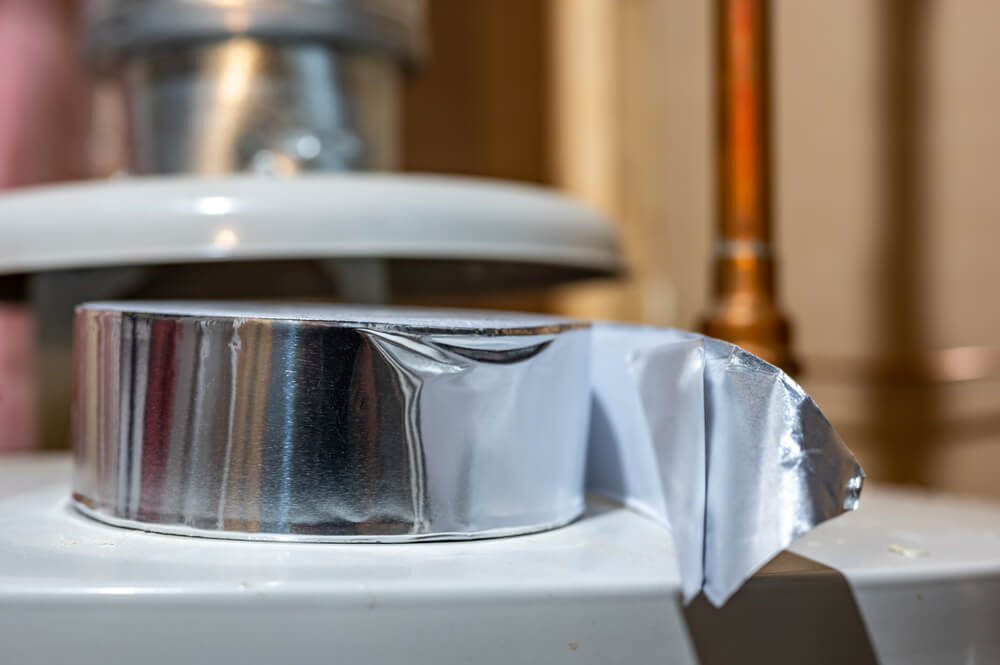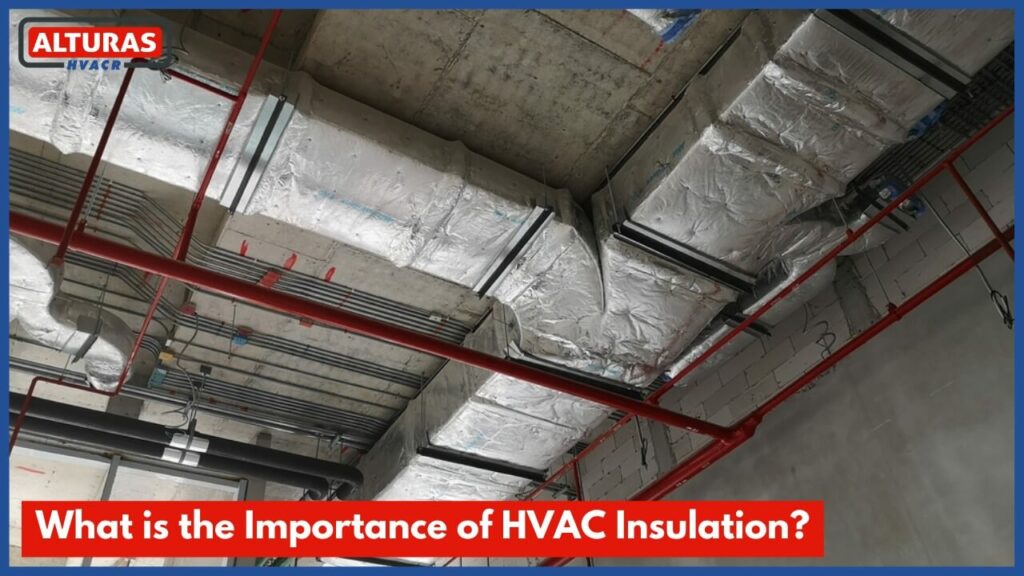The duct systems of a building play an essential role in regard to heating and cooling, all of which are transferred through your air vents and ducts. For both industrial and commercial properties, it is highly important to make sure that you have effective HVAC insulation installed.
What is HVAC insulation?
HVAC Insulation is the process of limiting heat loss/heat gain as well as avoiding condensation for cold ducts. Therefore, HVAC insulation plays a major role in energy usage for both buildings and industrial and commercial properties.
Many homeowners or business owners often overlook the importance of HVAC insulation in their ductwork. Many might even find it unnecessary as their uninsulated system performs well without insulation. Whether your building is used for a work environment, hosting events, or used for commercial purposes, there are many reasons why you need your HVAC systems insulated.
It helps prolong the life of your ductwork and other system components. There are many types of insulation such as thermal insulation, soundproofing, fire resistance insulation, and much more.
The Benefits of HVAC Insulation

It offers protection, cost-effectiveness, and sustainability to your property and your ducts/piping. Going through this article will let you know more about what is the importance of insulation and its benefits.
Reduced heat loss and gain
The main goal of a thermally insulated HVAC system is to reduce the amount of heat loss and heat gain, which in turn saves energy, through the ducts. For example, if your duct is not insulated, it could lead to cold air traveling through it. This results in temperature gain that resultantly causes condensation, water dripping, and many other issues.
Reduce moisture in pipes
Thermal insulation is also beneficial for the piping of your HVAC system. For cold lines, the insulation helps prevent air leakage and reduce the risk of condensation of moisture onto your pipes. For suction lines, thermal insulation prevents the loss of capacity or sweating due to heat gain. The insulation will regulate temperatures, if there is heat gain, it adds an extra load to the condenser.
Save Money
When your HVAC systems are insulated, you can expect to save money on your business’s energy bills every month. The HVAC component of your building consumes approximately 30%-60% of overall energy. Insulation reduces the exchange of heat through the surfaces such as a wall, attics, ducts, or roofs.
In a well-insulated home or a building, less warm air escapes during the winter, and less cool air escapes during the summer. This consequently reduces the amount of energy needed for heating and cooling. Therefore, by reducing the overall energy usage of your piping, ductwork, and ventilation, you can expect to see lower energy bills. Essentially, if your HVAC system is effectively insulated, it will consume less energy and save you money on your energy bills.
Soundproofing
Ducts, vents, and piping can be extremely noisy. This can be a nuisance especially if the property is entertaining guests, is a workplace, or is a commercial area like a restaurant. Operational sound can easily travel via the HVAC components, creating an uncomfortable environment. However, with sufficient soundproofing insulation, the amount of sound that is transferred through the duct can be significantly reduced.
Prevents Condensation
The continuous transfer of cool air and warm air increases the risk of condensation. If condensation builds up in your ductwork the moisture can further lead to mold growth and unwanted issues. Hence, sufficient insulation of your HVAC system mitigates the risks of condensation buildup. There are certain types of insulation that can prevent this from happening.
Fire resistance
This is another key benefit you can have when insulating your heating, ventilation, and air conditioning systems. It is crucial for commercial and industrial buildings to have robust fire-resistant insulation. It should meet regulations for the safety of the internal components. There are many types of non-combustible insulations that can offer resistance to fire and help prevent the passing of fire.
HVAC Insulation Requirements
R-value
Duct insulation must conform to requirements for R-value. The R-value of insulation is a rating of effectiveness. It indicates how well the insulation resists the flow of heat from a warm area to a cooler area. The R-value also indicates how well the insulation will keep heat out of your home or commercial facility in the summer and inside during the winter. Higher R-value numbers mean better and more efficient levels of insulation.
R-values for duct insulation range from R-1.9 to R-12.
Duct insulation code sources and authorities
Reliable and authoritative resources for duct insulation include:
- International Mechanical Code (IMC) 2009 and 2012
- Internal Energy Conservation Code (IECC) 2009 and 2012
- ASHRAE 90.1-2007 and 2010
Climate zones
The insulation code sources divide the United States into a variety of climate zones, based on factors such as local seasonal temperatures, precipitation, and other climate characteristics. Each climate zone requires insulation of a different R-value.
When is insulation required on Air Ducts?

All air ducts should be insulated in order to provide noise control, save energy, and, where necessary, prevent condensation. Anywhere that has an extreme temperature difference between the air in the ducts, and the air around the ducts needs some kind of insulation around it. Condensation control is always required when the temperature in the room through which the duct runs is higher than that of the cooled air in the duct.
Duct Insulation Material
Fiberglass Insulation
This is the most common type of air duct insulation in the market. R-values range from R-4 to R-11 for ductwork. Fiberglass insulation comes in two distinct formats: flexible and rigid.
Flexible fiberglass insulation
In this type of insulation, the outer backing that people can see is backed by foil. The foil forms an insulating layer that helps to keep the fiberglass intact. HVAC technicians will keep the air duct insulation wrapped around the duct with industrial-strength tape. Fiberglass is one of the most effective insulation materials on the market.
Rigid board insulation
This one comes in handy for rectangular ducts. Clamps or clasps keep rigid board insulation against the ductwork.
Polyethylene Bubbles
A second type of duct insulation is made of polyethylene bubbles in between two radiant barriers. The radiant barriers look similar to foil with reflective surfaces. Think of bubble wrap you use in packaging, only with two foil layers on either side of it.
Let Alturas HVAC Contractors determine your HVAC Insulation needs!
Let Alturas HVAC Company Los Angeles take a look at your building and ductwork to determine what type of insulation for ductwork is right for your building. Our team handles air ducts in residences and commercial buildings in Los Angeles. We provide installation, repair maintenance as well as consultation services regarding all types of HVAC equipment. We’ll even remove insulation from your building and recommend the right kind of air duct insulation for your needs.

